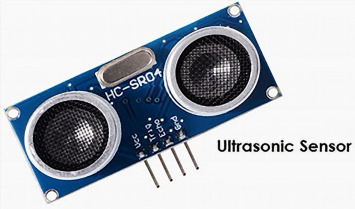In industrial processes, maintaining precise levels of liquids or solids is paramount. Whether it’s monitoring the fuel level in a tank, managing inventory in silos, or ensuring the proper flow of materials in a production line, accurate level monitoring is essential for efficiency, safety, and cost-effectiveness. Among the arsenal of technologies available for this task, ultrasonic level sensors stand out for their versatility, reliability, and efficiency.
Advantages of Ultrasonic Sensors in Level Monitoring
Non-Contact Measurement: One of the most significant advantages of ultrasonic sensors is their non-contact nature. Unlike traditional methods such as float switches or capacitance probes, ultrasonic sensors do not need to come into physical contact with the substance being measured. This feature eliminates the risk of contamination, corrosion, or mechanical failure, making ultrasonic sensors ideal for use in harsh environments or with corrosive substances.
High Accuracy and Precision: Ultrasonic sensors offer high levels of accuracy and precision in level measurement. With advancements in signal processing algorithms and sensor technology, modern ultrasonic sensors can achieve measurement accuracies of up to a few millimetres, even in challenging conditions such as turbulent surfaces or extreme temperatures.
Wide Range of Applications: Ultrasonic sensors are highly versatile and can be used to measure levels of liquids, solids, or even granular materials. From monitoring water levels in reservoirs to controlling the flow of bulk materials in industrial processes, ultrasonic sensors find application across various industries, including manufacturing, agriculture, wastewater management, and logistics.
Applications of Ultrasonic Sensors in Various Industries
Industrial Automation: In manufacturing facilities, ultrasonic sensors are employed for inventory management, process control, and quality assurance. They can monitor levels of raw materials in storage tanks, regulate the filling of containers on assembly lines, and detect the presence of objects in conveyor systems with precision and reliability.
Environmental Monitoring: Ultrasonic sensors play a vital role in environmental monitoring and management. They are used to measure water levels in rivers, lakes, and reservoirs for flood forecasting, irrigation management, and hydrological research. Additionally, ultrasonic sensors are employed in weather stations for monitoring snow depth, water levels, and atmospheric conditions.
Factors Influencing the Performance of Ultrasonic Sensors
Several factors can influence the performance of ultrasonic sensors in level monitoring applications:
Material Properties: The nature of the substance being measured, such as its density, reflectivity, and surface texture, can affect the accuracy of ultrasonic measurements. For example, highly absorbent or rough surfaces may attenuate sound waves and result in inaccurate readings.
Installation and Mounting: Proper installation and mounting of ultrasonic sensors are crucial for optimal performance. Factors such as mounting height, angle, and orientation relative to the surface being measured can influence measurement accuracy. Ensuring a clear line of sight between the sensor and the target is essential to avoid false readings caused by obstructions.
Installation and Calibration of Ultrasonic Sensors
When installing ultrasonic sensors for level monitoring, follow these guidelines for optimal performance:
Choose the Right Location: Place the sensor at a location where it has an unobstructed view of the surface to be measured. Avoid mounting the sensor near obstructions such as pipes, walls, or other equipment that could interfere with the ultrasonic signal.
Mounting Height and Angle: Position the sensor at an appropriate height and angle relative to the surface being measured to ensure accurate readings. Follow the manufacturer’s recommendations for mounting orientation and angle adjustment.
Calibration: Calibrate the ultrasonic sensor according to the specific requirements of the application. This may involve setting the measurement range, adjusting sensitivity settings, or compensating for environmental factors that could affect accuracy.
Tips on Buying Ultrasonic Sensors for Level Monitoring
When selecting ultrasonic sensors for level monitoring applications, consider the following factors:
Measurement Range and Accuracy: Choose sensors that offer the required measurement range and accuracy for your specific application. Consider factors such as the size of the tank or vessel, the variability of the material being measured, and the desired level of precision.
Environmental Compatibility: Ensure that the sensors are suitable for the environmental conditions of the application site, including temperature, humidity, and exposure to dust, moisture, or corrosive substances. Look for sensors with robust construction and IP-rated enclosures for protection against environmental hazards.
Mounting Options and Accessories: Consider the mounting options and accessories available for the sensors, such as brackets, mounting flanges, and protective covers. Choose sensors that offer flexibility and ease of installation to accommodate the layout and requirements of your facility.
Compatibility with Existing Systems: Check compatibility with existing control systems, PLCs, or data acquisition systems used in your facility. Look for sensors that support common communication protocols such as Modbus, Profibus, or Ethernet/IP for seamless integration with your existing infrastructure.
If you’re looking for a powerful and versatile solution for level monitoring applications across various industries, consider ultrasonic level sensors. By leveraging the principles of ultrasonic technology, these sensors provide non-contact, high-accuracy measurements of liquid and solid levels, enabling improved process efficiency, safety, and cost-effectiveness.


